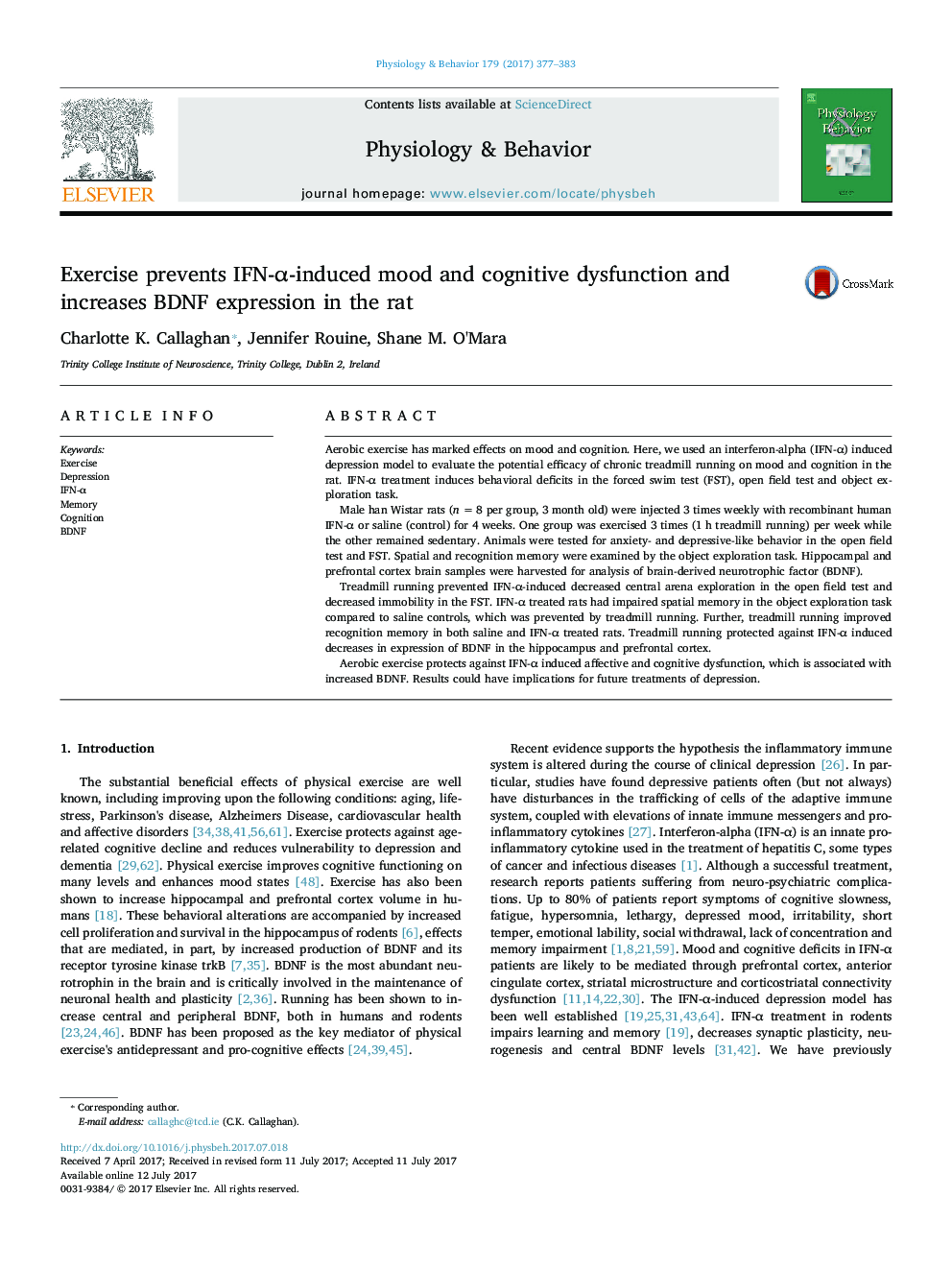| کد مقاله | کد نشریه | سال انتشار | مقاله انگلیسی | نسخه تمام متن |
|---|---|---|---|---|
| 5593666 | 1571140 | 2017 | 7 صفحه PDF | دانلود رایگان |

- Treadmill running prevented IFN-α-induced anxiety- and deoressive-like behavior in the open field test and forced swim test.
- Treadmill running prevented IFN-α-induced impairment in spatial memory in the object exploration task compared.
- Treadmill running improved recognition memory in both saline and IFN-α treated rats.
- Treadmill running protected against IFN-α induced decreases in expression of BDNF in the hippocampus and prefrontal cortex.
Aerobic exercise has marked effects on mood and cognition. Here, we used an interferon-alpha (IFN-α) induced depression model to evaluate the potential efficacy of chronic treadmill running on mood and cognition in the rat. IFN-α treatment induces behavioral deficits in the forced swim test (FST), open field test and object exploration task.Male han Wistar rats (n = 8 per group, 3 month old) were injected 3 times weekly with recombinant human IFN-α or saline (control) for 4 weeks. One group was exercised 3 times (1 h treadmill running) per week while the other remained sedentary. Animals were tested for anxiety- and depressive-like behavior in the open field test and FST. Spatial and recognition memory were examined by the object exploration task. Hippocampal and prefrontal cortex brain samples were harvested for analysis of brain-derived neurotrophic factor (BDNF).Treadmill running prevented IFN-α-induced decreased central arena exploration in the open field test and decreased immobility in the FST. IFN-α treated rats had impaired spatial memory in the object exploration task compared to saline controls, which was prevented by treadmill running. Further, treadmill running improved recognition memory in both saline and IFN-α treated rats. Treadmill running protected against IFN-α induced decreases in expression of BDNF in the hippocampus and prefrontal cortex.Aerobic exercise protects against IFN-α induced affective and cognitive dysfunction, which is associated with increased BDNF. Results could have implications for future treatments of depression.
Journal: Physiology & Behavior - Volume 179, 1 October 2017, Pages 377-383